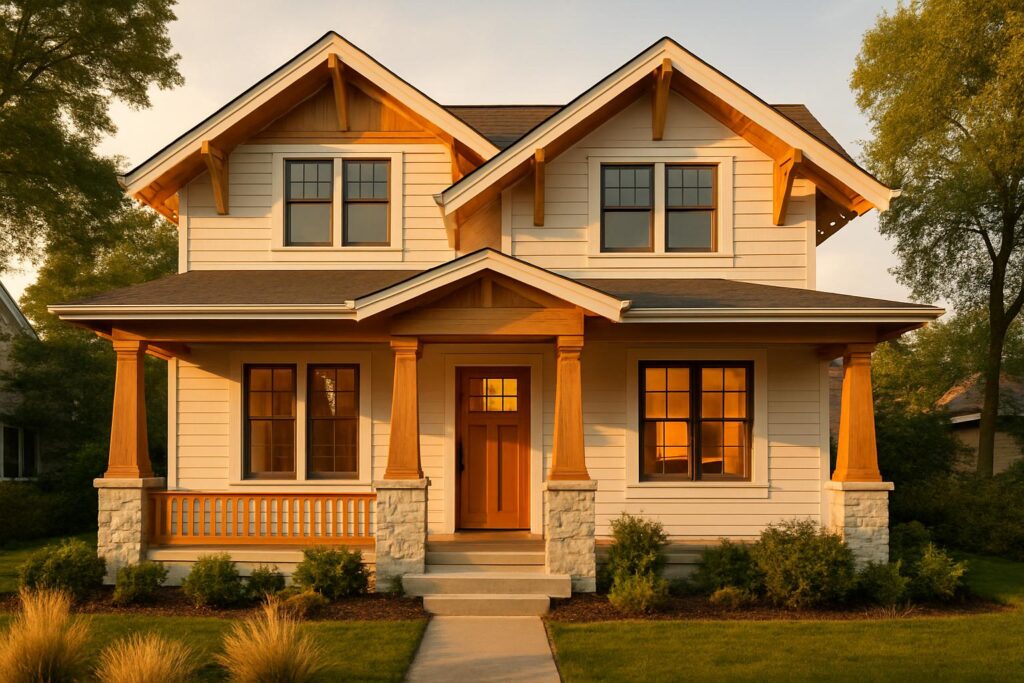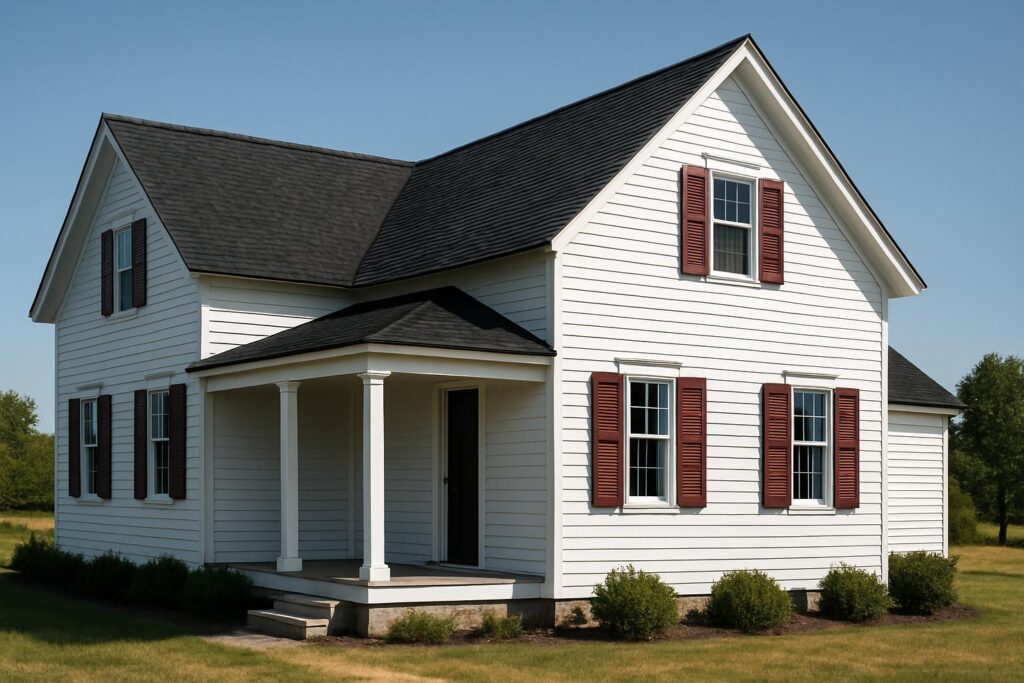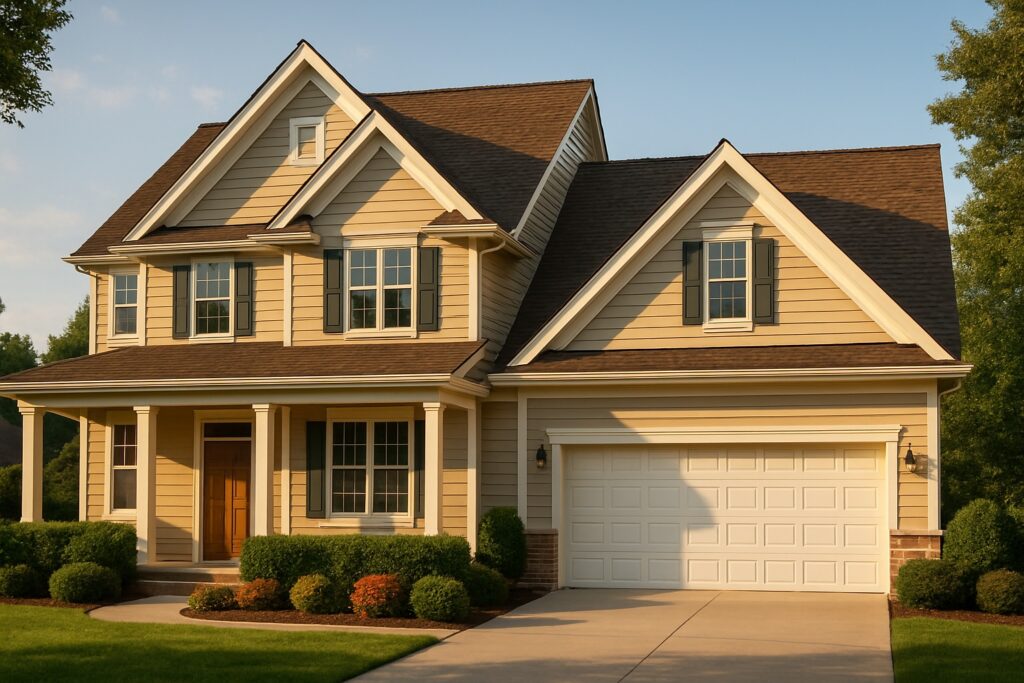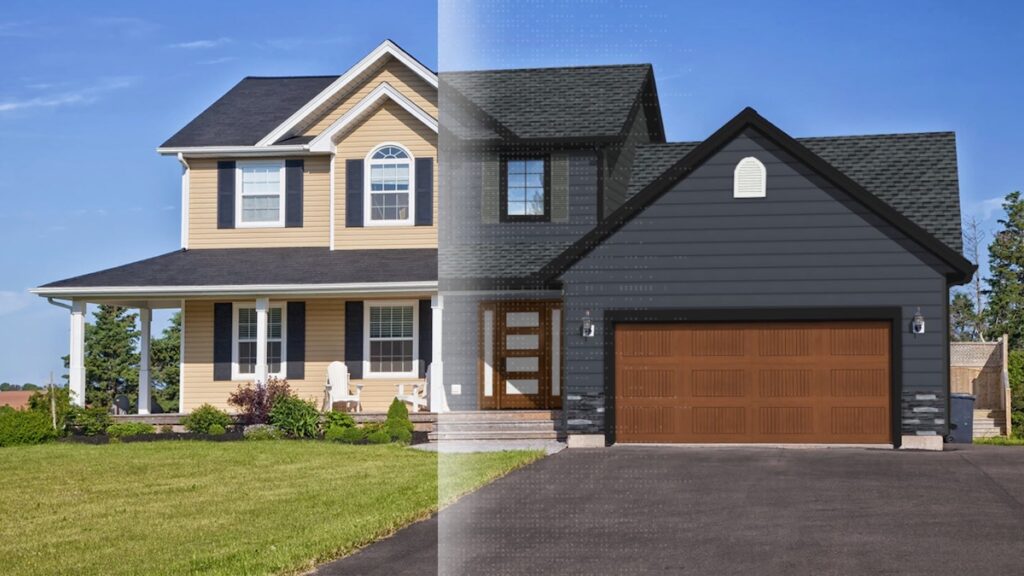TLDR
Modern homes continue to be one of the most desired styles for homeowners because they combine clean design, functional layouts, and lasting value.
Key Takeaways:
Modern homes emphasize simplicity, open floor plans, and a connection to the outdoors.
Building costs vary by materials and location, but modern minimalist homes can be surprisingly efficient.
Differences between modern, contemporary, and new homes often confuse homeowners — understanding them helps guide better decisions.
Contractors recommend modern floor plans for resale value and long-term comfort.
👉 Ready to see how your home could look in a modern design? Try the Renoworks Visualizer to experiment with styles before you build or remodel.
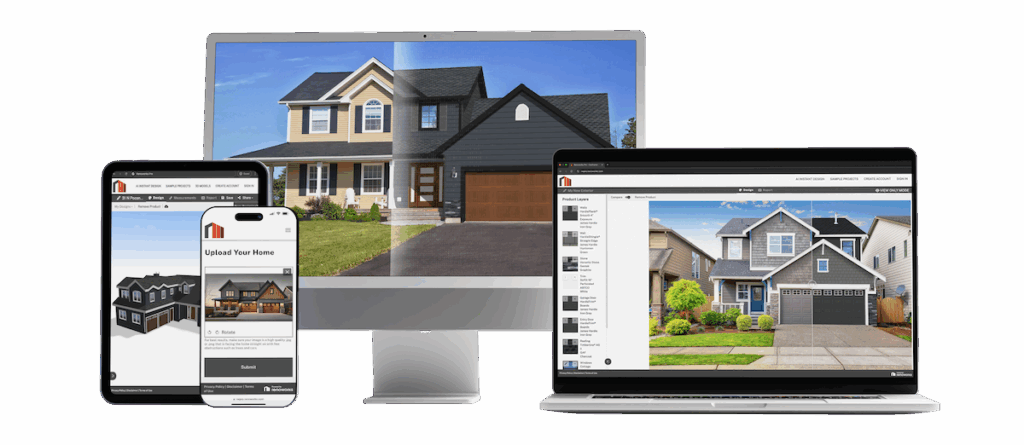
The Rise of Modern Homes
Modern homes are not just an architectural trend; they’re a response to how people want to live. Homeowners want light-filled spaces, smart layouts, and low-maintenance materials. Builders have also leaned into this style because it supports efficient construction and long-term durability.
Data from housing surveys shows that nearly 65% of buyers aged 30–45 prefer modern or modernist designs over traditional ones. This age group is also the largest pool of first-time homeowners, which explains why modern homes dominate new builds in suburbs and cities alike.
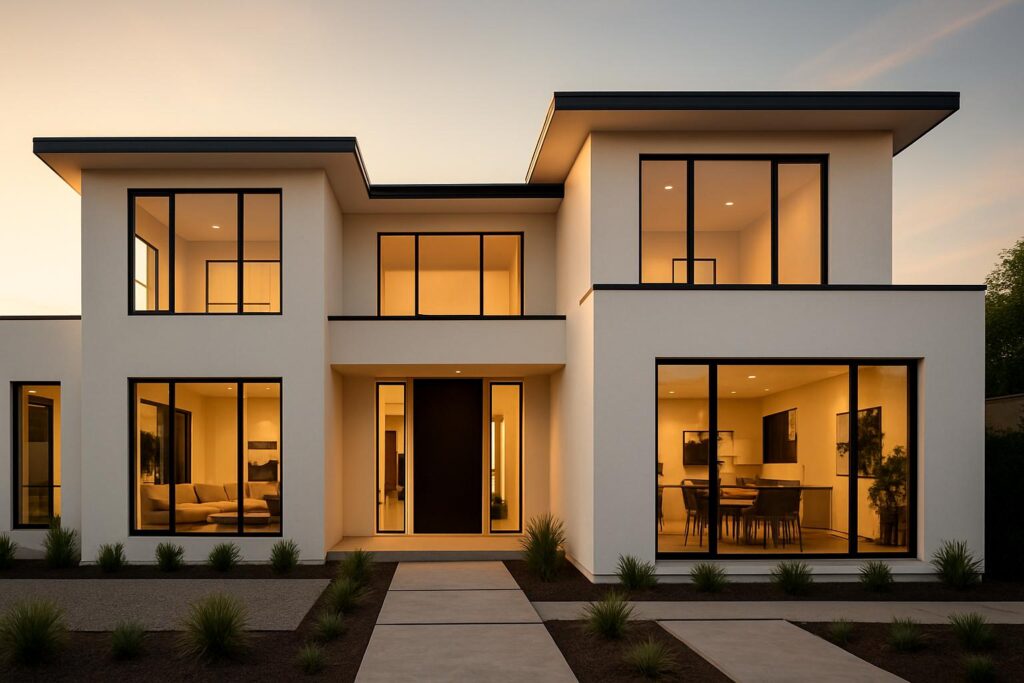
What Defines a Modern House?
At its core, a modern house is recognized by three things: simplicity, integration with its surroundings, and practical comfort.
Contractors often highlight:
Flat or low-pitched roofs
Large windows for natural light
Minimalist details with smooth surfaces
Materials like steel, glass, and concrete used for both function and design
This is why many homeowners describe modern homes as “less decorative but more livable.”
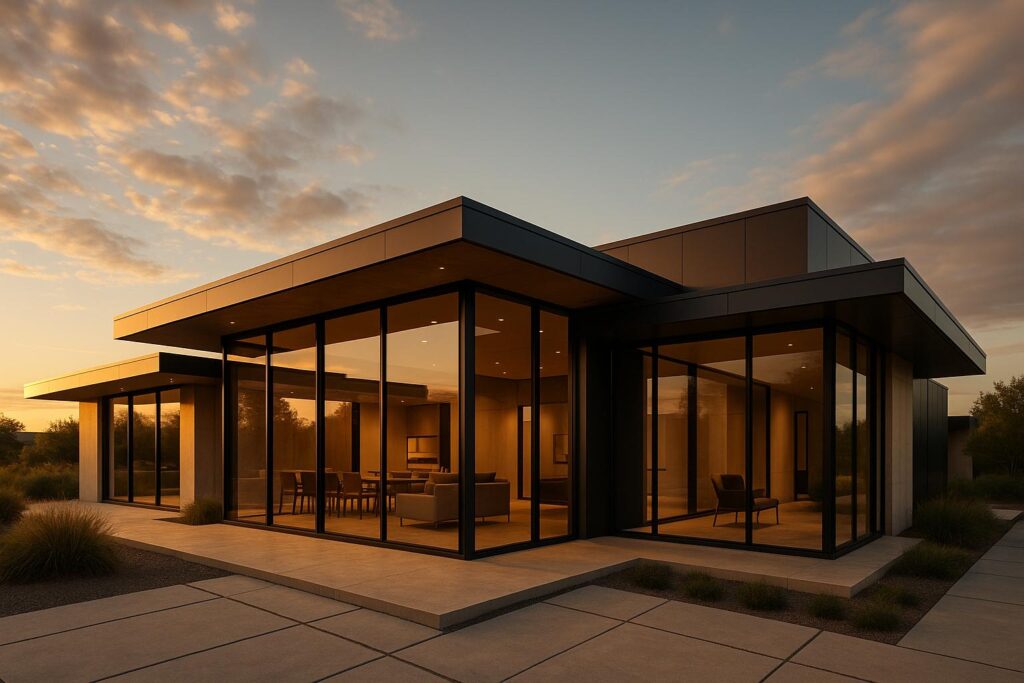
Modern Floor Plans: Function Meets Comfort
A modern floor plan is more than just a layout; it’s a philosophy of living. Instead of dividing every function into closed rooms, modern floor plans emphasize openness.
Typical features include:
Living, dining, and kitchen spaces combined into one flowing area
Minimal hallways for efficiency
Bedrooms and private spaces tucked away but still accessible
Outdoor patios or decks designed as extensions of the living space
For contractors, this means fewer structural walls and more flexibility when customizing. For homeowners, it translates into spaces that feel bigger, brighter, and better suited for entertaining.
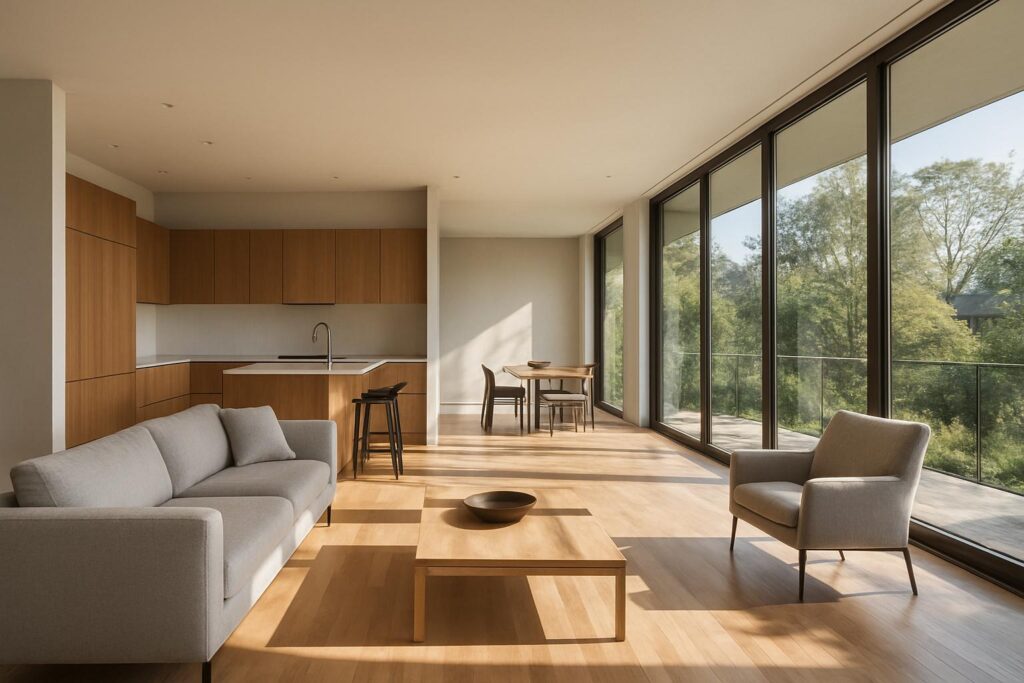
The Different Types of Modern Homes
Modern doesn’t mean one-size-fits-all. There are multiple categories of modern homes, each appealing to different homeowner needs:
Mid-Century Modern – Popularized in the 1950s and 1960s, featuring angular roofs and integration with nature.
Minimalist Modern – Clean forms, few interior walls, and neutral palettes.
Modern Farmhouse – Mixing rustic elements with modern lines, often appealing to suburban buyers.
Industrial Modern – Inspired by lofts and warehouses, using raw finishes and exposed structures.
Each type balances aesthetic appeal with practical design, but contractors often recommend choosing based on resale demand in your local market.
Costs of Building a Modern Minimalist Home
One of the most common homeowner questions is: How much does it cost to build a modern minimalist home?
While location, size, and materials play a huge role, contractors generally price modern minimalist builds between $200–$400 per square foot.
Using standard finishes like stucco and vinyl windows keeps costs down.
Custom glass walls, engineered hardwood, and steel framing increase budgets significantly.
Minimalist styles often save money by cutting out decorative trim and unnecessary features.
Builders report that streamlined designs can reduce waste by 15–20% compared to ornate traditional homes.
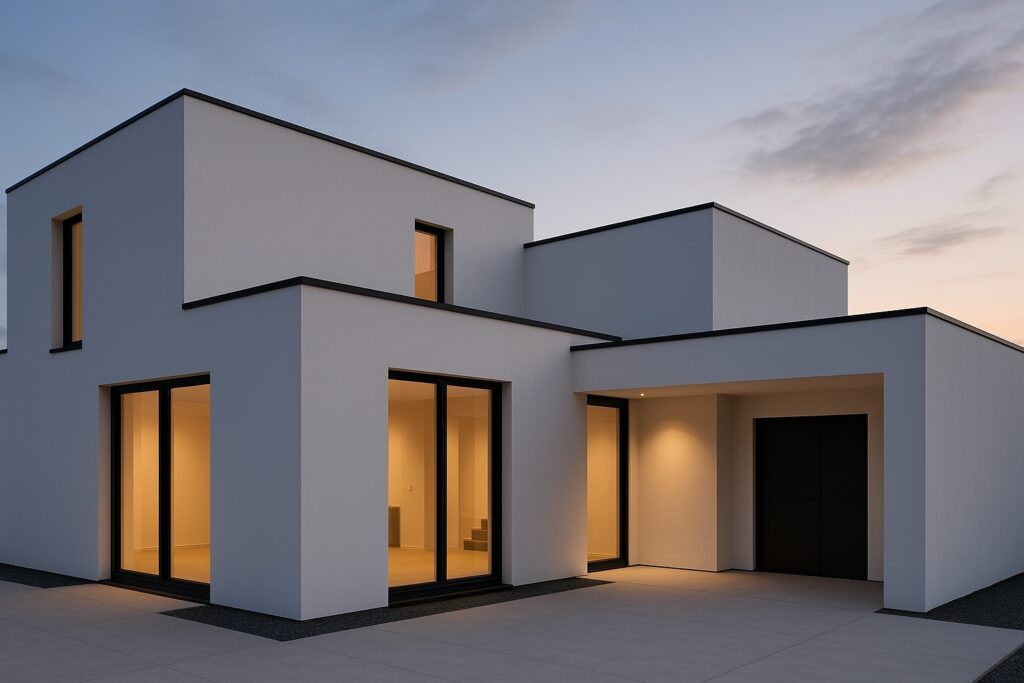
Is Modern Architecture Cheaper to Build?
It depends on the approach. While the clean lines of modern architecture may suggest lower costs, the heavy use of glass, steel, and engineered finishes can raise budgets.
However, builders often find savings in:
Simplified framing and roof designs
Fewer interior partitions
Materials designed for durability (reducing long-term maintenance)
Contractors often explain to clients that while upfront costs may be similar or slightly higher, modern homes usually pay back in lower energy bills and higher resale appeal.
Characteristics of Modern Homes
Contractors usually teach homeowners to recognize three characteristics of modern houses quickly:
Simplicity – Minimal ornamentation, clean lines, and uncluttered designs.
Functionality – Every square foot serves a purpose.
Integration – Indoor and outdoor spaces flow seamlessly.
These characteristics are also echoed in modern architecture more broadly.
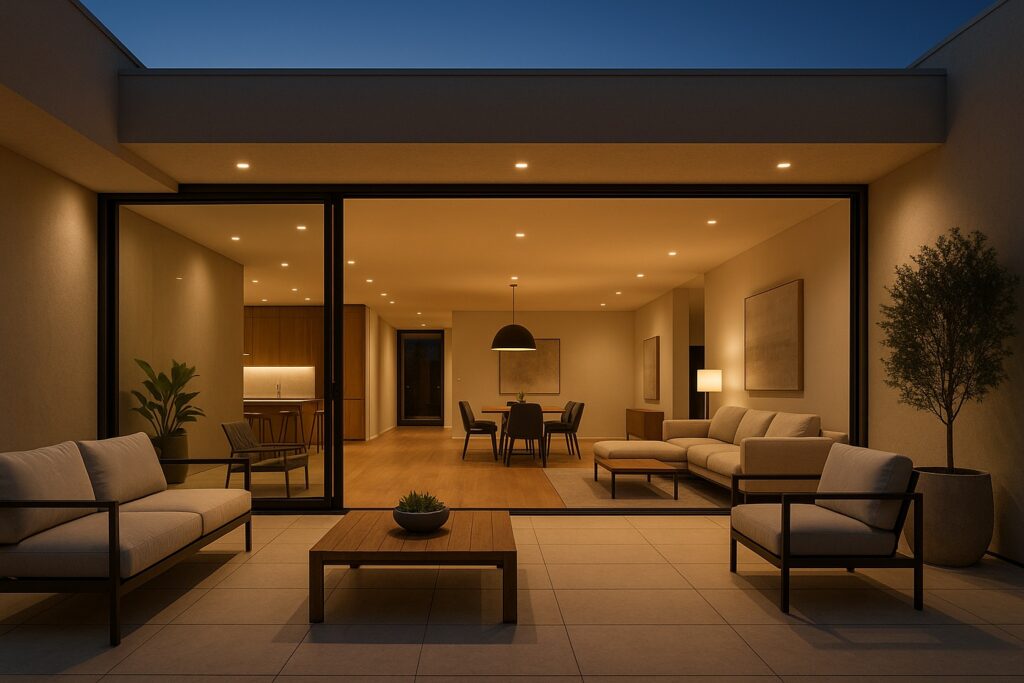
Modern vs. Contemporary vs. New Style Homes
Homeowners are often confused between “modern,” “contemporary,” and “new style” houses.
Modern refers to the specific design movement of the mid-20th century and its evolution.
Contemporary reflects the current trends — which may borrow from modern, traditional, or even futuristic influences.
New style houses are marketing terms often used by builders to describe current production homes, usually mixing multiple design cues.
When selecting a design, homeowners should clarify whether they want a timeless modernist home or simply a trendy build reflecting today’s preferences.
The Popularity of Modern Style Today
Market research shows that modern homes remain in the top three most popular house styles in North America. Buyers cite “light-filled rooms,” “easy maintenance,” and “resale value” as their main reasons.
Contractors frequently advise that modern floor plans not only appeal to current buyers but also perform strongly in resale markets, particularly in urban and suburban areas where efficiency is prized.
Final Thoughts: Why Choose Modern Homes?
Modern homes give homeowners the best of both worlds: timeless design and practical comfort. Contractors continue to recommend modern floor plans because they work with today’s lifestyles while staying attractive for resale markets.
Want to see how your home could transform with modern style?
Use the Renoworks Visualizer today to experiment with exterior finishes, windows, and layouts before you build.
Modern Homes FAQ
What Are Modern Houses Called?
Modern houses are typically called “modern homes” or “modernist style houses,” depending on the architectural details.
What Is a Modernist Style House?
A modernist style house emphasizes function, geometric forms, and minimal ornamentation, often inspired by mid-20th century design.
What Is a Modern Floor Plan?
A modern floor plan is open-concept, minimizing hallways and barriers to create bright, flowing living spaces.
What Are the Different Types of Modern Homes?
They include minimalist modern, mid-century modern, modern farmhouse, and industrial modern, each with unique features.
Is Modern Architecture Cheaper to Build?
It can be, if contractors simplify materials and framing. However, high glass usage and premium finishes may raise costs.
What Are 3 Characteristics of a Modern House?
Simplicity, functionality, and integration with nature or outdoor spaces.
How Much Does It Cost to Build a Modern Minimalist Home?
Most cost between $200–$400 per square foot, depending on materials and location.
What Are 3 Characteristics of Modern Architecture?
Minimal ornamentation, clean geometric lines, and heavy use of modern materials like glass and steel.
What Are New Style Houses Called?
They’re often called “new build homes” or “new style houses,” terms builders use for current production houses.
What Is the Difference Between Modern and Contemporary Styles?
Modern homes reflect a defined movement; contemporary homes reflect current trends and may mix styles.
What Are the Most Popular House Styles?
Modern, contemporary, and traditional craftsman homes remain the most popular in today’s market.
What Is Contemporary vs. Modern Styles?
Contemporary homes represent current design trends; modern homes reflect mid-20th century principles of simplicity and function.



